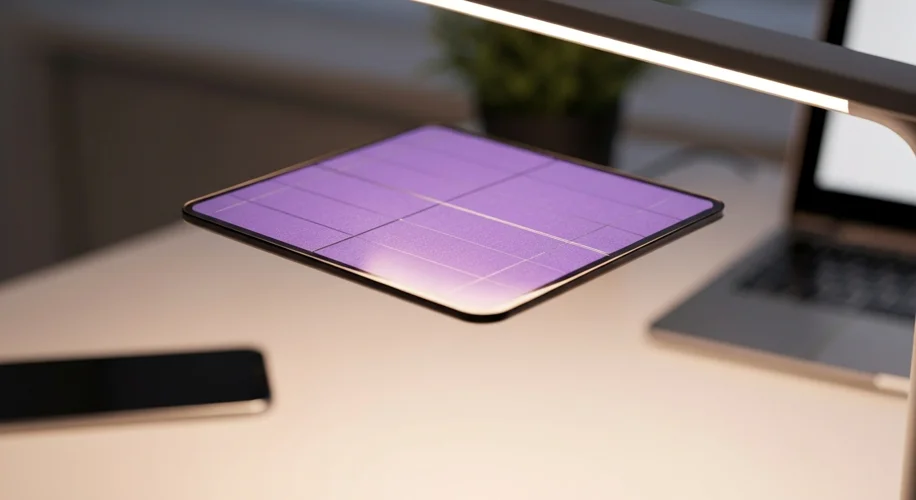Okay, so hear me out… what if your phone, your smart watch, or even those little sensors around your house could power themselves without ever needing a plug or a battery change? That’s not sci-fi anymore, thanks to some seriously cool advancements in indoor solar cell technology.
I was digging into some research recently, and I stumbled upon this article from Interesting Engineering about how perovskite materials are making indoor solar cells way, way better. We’re talking about cells that can generate up to six times more energy from indoor lighting compared to the older tech.
What’s the Big Deal with Perovskites?
So, traditional solar cells are great for the sun, right? They’re designed to capture that intense sunlight. But most of the light we deal with indoors – from your desk lamp, your overhead lights, even sunlight streaming through a window – is a different kind of spectrum. Perovskites are these amazing little crystal structures that are way more efficient at soaking up this lower-intensity indoor light.
Think about it: most of the electronics we use daily have small batteries. Laptops, wireless earbuds, remote controls, smoke detectors, even smart home sensors. These all need charging or battery replacements. If we could power them reliably with just the ambient light in our homes or offices, it would be pretty huge.
Battery-Free Future, Anyone?
The idea is to create ‘energy-harvesting’ devices. Instead of storing energy in a battery, they just generate enough power from their surroundings to operate. This could mean:
- Always-on IoT devices: Imagine sensors in your fridge or your plants that never run out of power.
- Self-powered wearables: Your smartwatch could stay charged just by being in a well-lit room.
- Reduced e-waste: Less reliance on batteries means fewer batteries ending up in landfills.
This isn’t just about making our gadgets last longer; it’s about making them more sustainable and convenient. The article mentioned that these perovskite-based cells are showing real promise in generating enough consistent power to actually run low-power electronics. It’s still early days, and there are challenges to overcome, like making sure the materials are super stable and long-lasting. But the progress is undeniable.
It’s honestly pretty mind-blowing to think about the potential. We’re already surrounded by light, and now we’re getting closer to a future where we can tap into that readily available energy source to keep our tech humming. Definitely one to keep an eye on!

